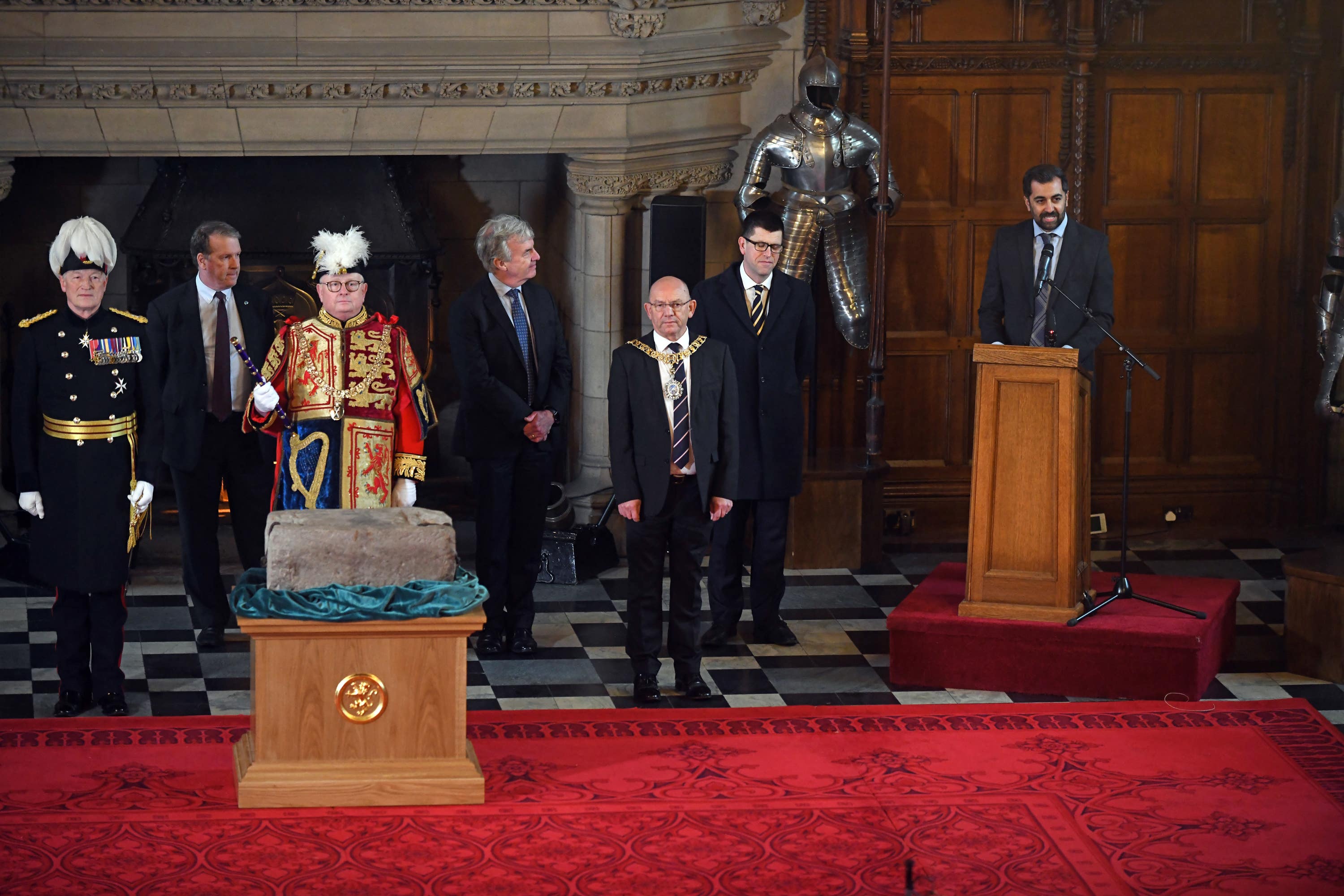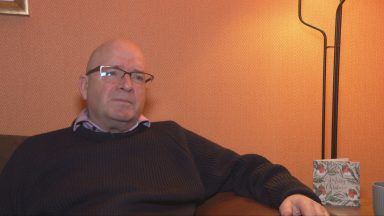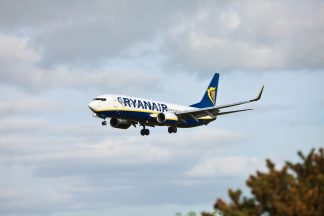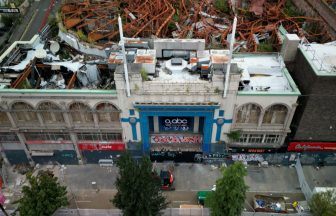A fragment of sandstone which was kept at SNP headquarters for years and was said to come from the Stone of Destiny is almost certainly to a genuine piece of the artefact, experts have concluded.
The revelation could pave the way for the “missing” chip to be reunited with the ancient Stone of Scone at its new home in Perth.
Former first minister Alex Salmond was given the fragment by the son of one of the pro-independence students who famously stole the Stone of Destiny from Westminster Abbey in 1950.
However, until now its provenance had not been conclusively established and it had apparently resided in a cupboard at SNP HQ since 2008.
 PA Media
PA MediaAn analysis of the stone fragment was carried out by Historic Environment Scotland on behalf of the royally-appointed Commissioners for the Safeguarding of the Regalia – who are responsible for the preservation of certain important historic items.
The scientific analysis determined beyond reasonable doubt that it was taken from the Stone of Destiny.
In March this year, the SNP requested that the small piece of stone be reunited with the rest of the block at Perth Museum, which received the Stone of Destiny as part of a £27m redevelopment.
The existence of the fragment was revealed in Scottish Government cabinet records which were published at the start of this year.
 PA Media
PA MediaThe Commissioners will decide on where the fragment will go.
Scotland’s First Minister is appointed as one of the Commissioners for the Safeguarding of the Regalia when they take office.
But both John Swinney, and former first minister Humza Yousaf, have recused themselves on decisions about the fragment – as SNP leaders they wished to avoid any potential conflict of interest.
The SNP’s longest-serving MP, Pete Wishart, had earlier called for the “missing” piece to be moved to Perth Museum.
 PA Media
PA MediaThe conclusion of the scientific tests adds a new chapter to the long story of the Stone of Destiny, which has been associated with the Scottish and UK monarchies for centuries.
It was long used in the inauguration of Scottish monarchs.
However, in 1296, it was seized by King Edward I of England as war loot and taken to London.
It was built into a Coronation Chair at Westminster Abbey and was used in the coronation ceremonies of Kings and Queens of England and, later, Great Britain after the Scottish and English crowns were united in the early 17th century.
In 1950, a group of students carried out an audacious raid to steal the stone from Westminster Abbey and return it to Scotland to try and advance the cause of independence.
The raid led to the sandstone block splitting in two – a possible source of the fragment which later found its way to the SNP.
The Stone of Destiny was used in Queen Elizabeth II’s coronation in 1953 and was also used in the coronation of King Charles last year.
One of the students was John MacCormick and his son, Sir Neil MacCormick, gave the rock fragment to Mr Salmond in 2008.
Follow STV News on WhatsApp
Scan the QR code on your mobile device for all the latest news from around the country


 PA Media
PA Media
























